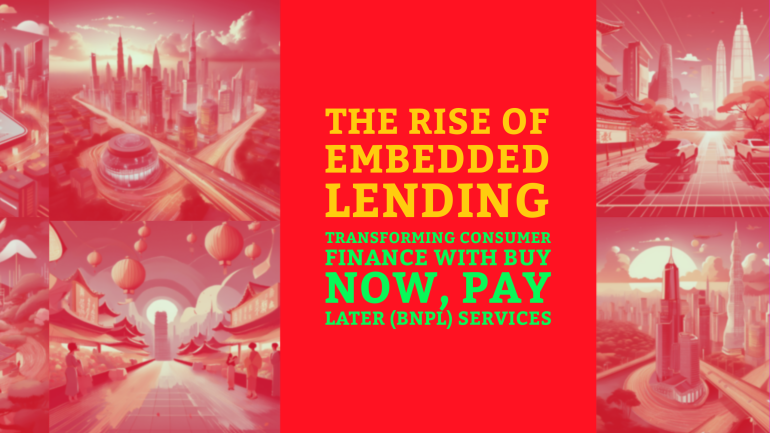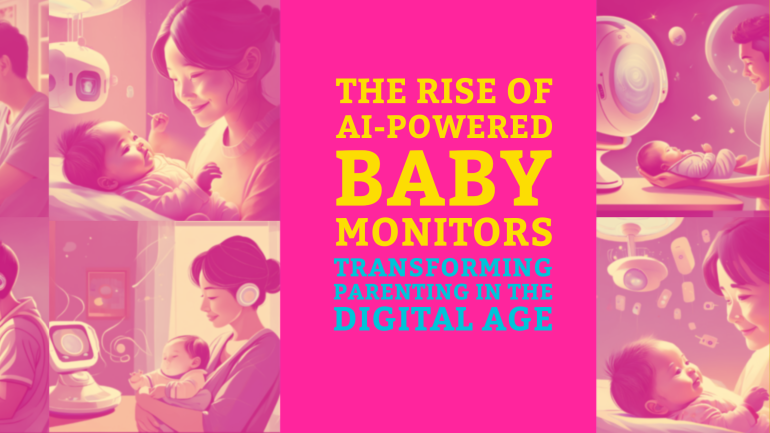The Rise of Embedded Lending: Transforming Consumer Finance with Buy Now, Pay Later (BNPL) Services
Table of Contents
TL;DR: The Future of Finance – Embedded Lending & BNPL Services
- Embedded Lending: Integrates financial services into non-financial platforms, enhancing user experience.
- BNPL Boom: The BNPL market is set to hit $1 trillion by 2025, driven by consumer demand for flexibility.
- Consumer Behavior: BNPL options lead to higher spending and improved conversion rates for businesses.
- SME Growth: Embedded lending offers SMEs quicker access to capital, aiding in competitive growth.
- Risk Management: Businesses must navigate consumer debt risks and regulatory scrutiny to maintain trust.
In an age where convenience is paramount, the financial landscape is undergoing a revolutionary transformation. The emergence of embedded lending and Buy Now, Pay Later (BNPL) services is not merely a trend; it is reshaping how consumers and businesses engage with financial products. As technology companies integrate these innovative financing solutions into their offerings, we explore the implications for both consumer and business finance, highlighting the transformative potential of embedded lending.
Understanding Embedded Lending
Embedded lending refers to the seamless integration of financial services into non-financial platforms, allowing businesses to offer financing options directly within their existing ecosystems. This approach simplifies access to credit, enhancing the overall customer experience. For instance, when consumers shop online and are presented with the option to pay in installments at checkout, they are experiencing embedded lending in action. This integration not only streamlines the financing process but also makes it more user-friendly, catering to the diverse needs of consumers.
The core features of embedded lending include its ability to provide on-the-spot financing, which can significantly enhance customer satisfaction. By offering tailored financial solutions, businesses can meet the unique demands of their customers, ultimately improving engagement and retention. As companies increasingly recognize the value of integrating financial services into their offerings, embedded lending is poised to reshape the financial landscape, turning every business into a potential fintech player.
The Growth of Buy Now, Pay Later (BNPL) Services
The popularity of BNPL services has surged dramatically in recent years, with consumer adoption reaching unprecedented levels. According to a report by Research and Markets, the global BNPL market is projected to reach $1 trillion by 2025, reflecting a growing trend among consumers who prefer flexible payment options. This shift is not just a fleeting trend; it signifies a fundamental change in consumer behavior driven by the desire for convenience and financial flexibility.
Recent developments in the BNPL space underscore this growth. For instance, Klarna recently introduced a subscription plan tailored for frequent shoppers, allowing them to manage their purchases with greater flexibility. This innovative approach not only addresses consumer needs but also positions Klarna as a leader in the BNPL market. Similarly, Apple has launched its Apple Pay Later program in the United States, enabling users to split their purchases into manageable payments. The entry of a tech giant like Apple into the BNPL market underscores the increasing acceptance of embedded lending in everyday transactions.
Moreover, retailers are recognizing the benefits of BNPL services. For example, At Home has debuted a BNPL program for qualifying purchases, indicating a broader trend of retailers adopting financing options to enhance customer experiences. By integrating BNPL into their offerings, these companies are not only improving customer satisfaction but also driving sales and revenue growth.
The Impact on Consumer Behavior
The rise of BNPL services is fundamentally reshaping consumer purchasing behavior and expectations. As more consumers opt for flexible payment options, traditional payment methods are being challenged. The convenience of BNPL allows shoppers to make purchases without the immediate financial burden, leading to increased spending and higher average order values. This shift in shopping habits is particularly pronounced among younger consumers, who prioritize flexibility and convenience in their purchasing decisions.
Furthermore, embedded lending enhances customer engagement by providing a seamless shopping experience. When consumers encounter financing options at the point of sale, they are more likely to complete their purchases, resulting in improved conversion rates for businesses. This integration of financial services into the shopping experience not only meets consumer demands but also fosters brand loyalty, as customers appreciate the convenience and flexibility offered by BNPL options.
B2B Expansion of Embedded Lending
While much of the focus on embedded lending has centered on consumer finance, its impact on small and medium-sized enterprises (SMEs) is equally noteworthy. Embedded lending is providing SMEs with faster access to capital, enabling them to thrive in an increasingly competitive landscape. Traditional financing methods can be cumbersome and time-consuming, often leaving businesses without the necessary funds to seize growth opportunities. However, embedded lending solutions, such as merchant cash advances and revenue-based financing, are changing this narrative.
Merchant cash advances allow businesses to receive upfront capital in exchange for a percentage of their future sales. This approach provides quick access to funds, enabling SMEs to manage cash flow effectively and invest in growth initiatives. Additionally, revenue-based financing offers an alternative funding method that aligns repayments with a business’s revenue, making it a flexible option for companies with fluctuating income streams. By leveraging these embedded lending solutions, SMEs can navigate financial challenges more effectively and capitalize on new opportunities.
Strategic Advantages for Businesses
The integration of BNPL options into business offerings presents numerous strategic advantages. One of the most significant benefits is the creation of new revenue streams. By providing financing options, businesses can attract a broader customer base and increase sales. This additional revenue can be reinvested into the business, driving further growth and innovation.
Moreover, the adoption of embedded lending transforms traditional companies into fintech players. As businesses integrate financial services into their offerings, they position themselves as comprehensive solutions for their customers. This shift not only enhances customer experiences but also strengthens brand loyalty, as consumers increasingly seek out companies that provide convenient and flexible financial options.
Addressing Potential Risks
While the benefits of embedded lending and BNPL services are substantial, it is essential to acknowledge potential risks. One significant concern is the potential for consumer debt accumulation. As consumers increasingly rely on BNPL options, there is a risk of overextending their financial capabilities, leading to debt traps. Businesses must prioritize transparency in their offerings, ensuring that consumers understand the terms and conditions associated with BNPL services.
Additionally, regulatory scrutiny surrounding BNPL services is on the rise. Governments and financial authorities are beginning to examine the implications of these services on consumer behavior and financial stability. Businesses must remain vigilant and proactive in adhering to regulatory guidelines to mitigate potential risks and maintain consumer trust.
Conclusion
The rise of embedded lending and BNPL services represents a transformative shift in both consumer and business finance. As tech companies and retailers embrace these innovative solutions, they are enhancing customer experiences and creating new revenue opportunities. The implications of this trend are profound, and businesses that leverage embedded lending will be well-positioned to thrive in the evolving financial landscape.
As we look to the future, it is essential for businesses to consider how they can integrate embedded lending into their offerings. By doing so, they can enhance customer experiences and explore new revenue streams through tailored financial solutions.
How can your brand leverage embedded lending to enhance customer experiences and create new revenue streams through tailored financial solutions? This question invites reflection and encourages businesses to explore the potential of embedded lending in their strategies.
FAQs
-
What is embedded lending? Embedded lending is the integration of financial services into non-financial platforms, allowing for seamless access to credit.
-
How does BNPL work? BNPL allows consumers to split purchases into manageable payments, enhancing flexibility and convenience.
-
What are the benefits of BNPL for businesses? BNPL can increase sales, improve customer satisfaction, and create new revenue streams.
-
What risks are associated with BNPL services? Potential risks include consumer debt accumulation and increased regulatory scrutiny.
-
How can SMEs benefit from embedded lending? SMEs can access faster capital through solutions like merchant cash advances and revenue-based financing.




